Author: Natalya Ivanova
Artist: Irina Astredinova
Contents: deck of 64 cards, methodological manual (120 pages)
The “Wings of the Mills” deck works perfectly with the current state, with the archetype theme -shadow, with requests for relationships, purpose, with questions regarding gender, as well as situations requiring decision making, cards will help you see the necessary and available resources. Suitable for both independent work and for working with a specialist: psychologist, coach, school psychologist, art therapist.
The “Wings of Mills” deck is a tool that allows you to get in touch with your inner world, turn to the resources of the unconscious to solve troubling issues and life situations. All the answers are already within us, and the cards will help us extract them.
Why “Wings of Mills”? Firstly, it’s beautiful, it refers us to the work of the Russian folk-rock group Melnitsa, reverently and endlessly loved by us. Secondly, the mill – a symbol of perseverance, moving forward, achieving success, changing times, the cyclicality of seasons, continuity, the legacy of previous generations – we meet in many cultures, see in films, read in stories and listen to in the stories and tales of our ancestors. Thirdly, a mill is what happens to us every day: we spin in a whirlpool of events, notice changes in weather, mood, feelings, sometimes we fight (like Don Quixote with windmills), sometimes we create and grow fruits, trusting time to grind them into flour, tasting which you involuntarily receive a lesson and a call to life! The mill is an image that concerns everyone; the life of many generations is woven into it. Why did we decide that the worlds of the Mill group would be suitable for a deck of metaphorical associative cards? This is because the card primarily carries an image that can evoke one or another association in a person and find a response in life. And if we take a scale of imagery from 0 to 100, then the imagery of mill songs will not fit into these marks, it will go off scale, exceed all values and subtly flow into you, smoothly but accurately moving through the palaces of memory and subconscious, spinning and twirling on its wings. The group’s songs are permeated with fairy tales, legends, myths, symbols, references and allegories, and this is the experience, wisdom and memory of peoples, ancestors, encrypted in our genes (collective unconscious). Can we say more? Of course, you can be endlessly surprised, admired and inspired by images from the world of the Mill. We invite you to dive into them with us.nbsp;nbsp;
The images of the cards in the deck appeal to the deepest corners of our subconscious: they turn to family and folk values, pictures of nature familiar from childhood, archetypes absorbed by us from the cultural environment and literature , fairy tales, songs. Works great with the current state, with the theme of the archetype-shadow with requests for relationships with oneself and others, purpose, with questions related to gender, as well as situations requiring decision-making, cards will help you see the necessary and available resources.
Features. The cards in the deck are numbered. The instructions for the deck contain a message for each card, so it is convenient to use it, for example, for working with clients on social networks as a message for the day, week, etc. For independent work, the instructions describe 3 techniques, which will allow even a beginner in the world of MAC to immediately start using the deck. The deck’s drawings are based on images of songs by the Russian folk rock group “Melnitsa”.
The set consists of 5 thematic subsections
1. Working with trauma (1-15 cards)
2. Resources (16-27 cards)
3. Actions (28-40 cards)
4. Totem animals (41-52 cards)
5. Patron plants (53-64 cards)
This division is conditional, and can be applied in individual and group offline work when working specifically with a specific request.
Techniques: For independent work, you can formulate a request. What does he suggest? A request is a story that is relevant to you, where it is important to find an answer. There are three main rules for formulating a request: it should not contain the question “when”, and it cannot be answered “yes” or “no”, and it should not affect other people, that is, the work is done only through the “I-position”.
1. First technique. Involves working only with the first 15 cards.
You formulate a request. Draw a card from the deck and look for its description by the number of the card drawn in part No. 1 of these instructions. Next, read the message, questions and complete the task for the map.
2. Second technique. Work with finding a solution, all cards are involved.
a) You formulate a request and draw two cards from the deck face down (face down). Open the first card, which will indicate the “Current Situation”. You need to study the map, understand what it means in the context of your request. Work with universal questions for the MAK.
1. What is shown on the map? What I see?
2. How do I feel when looking at the map?
3. Is there me on the map or am I an observer?
4. What action takes place on the map?
5. How does this relate to my life?
6. What is on the map about me and what is not about me?
7. What do you want to do when looking at this picture?
8. What would I change when looking at this map?
9. What name would I give the map?
10. What message does the card convey in response to my request?
b) Then open the second card – “Desired situation” or “Problem solution”. Look at every detail of the map, study, catch the first associations, analyze in the context of how you want to solve your situation, what will help.
c) Next, it is important to look at the steps that will lead you to the desired situation: what will help solve the situation indicated in the request. To do this, you need to pull 3 cards from the deck. In the first card we are looking for ourselves, our situation and a message for some step that needs to be taken first in order to move forward. The second card is the second step towards solving the problem (where are you, your problem, the people around you, etc.). The third card is the third step towards a solution (what are the first associations that arise if we are talking about a step towards deciding what it might be).
d) Think again about the work done and draw a conclusion for yourself. You can record answers, ideas, and observations on paper.
PS This method will help you look where you haven’t looked yet. A decision generated by the subconscious often leads to an unexpected result.








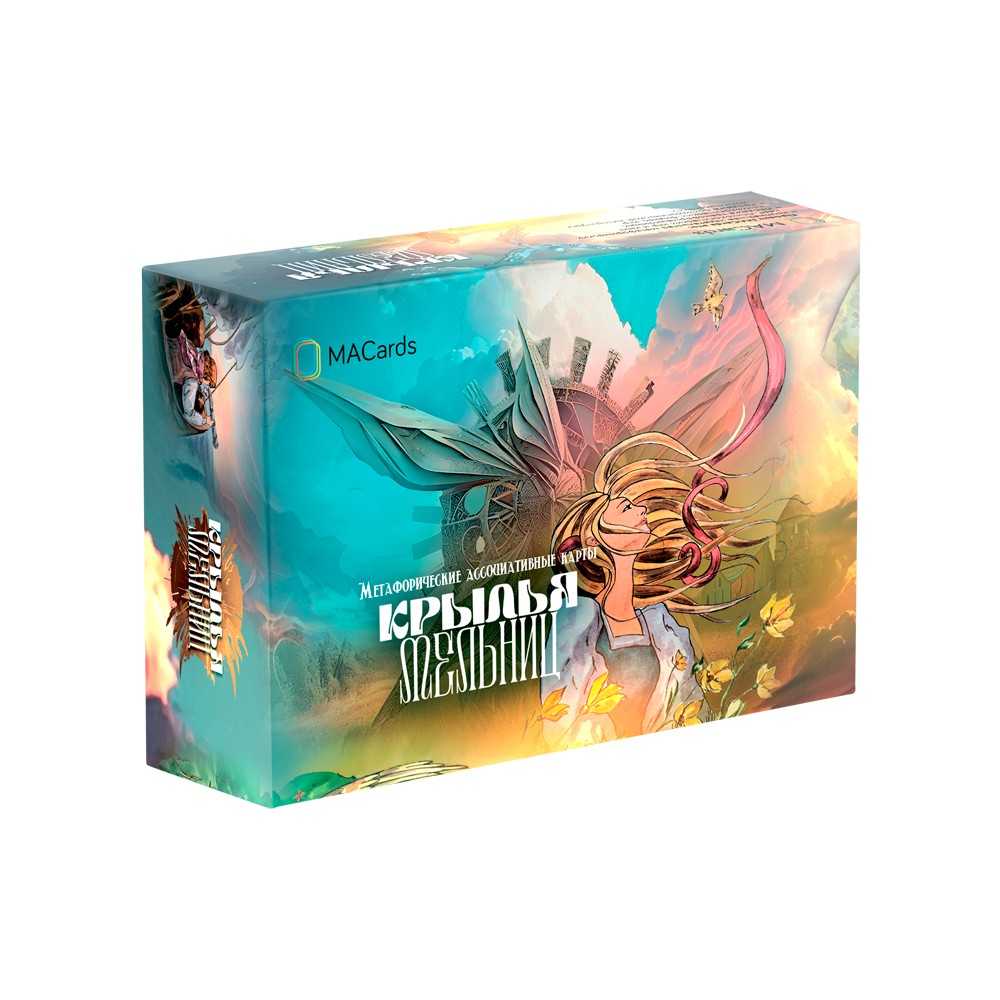
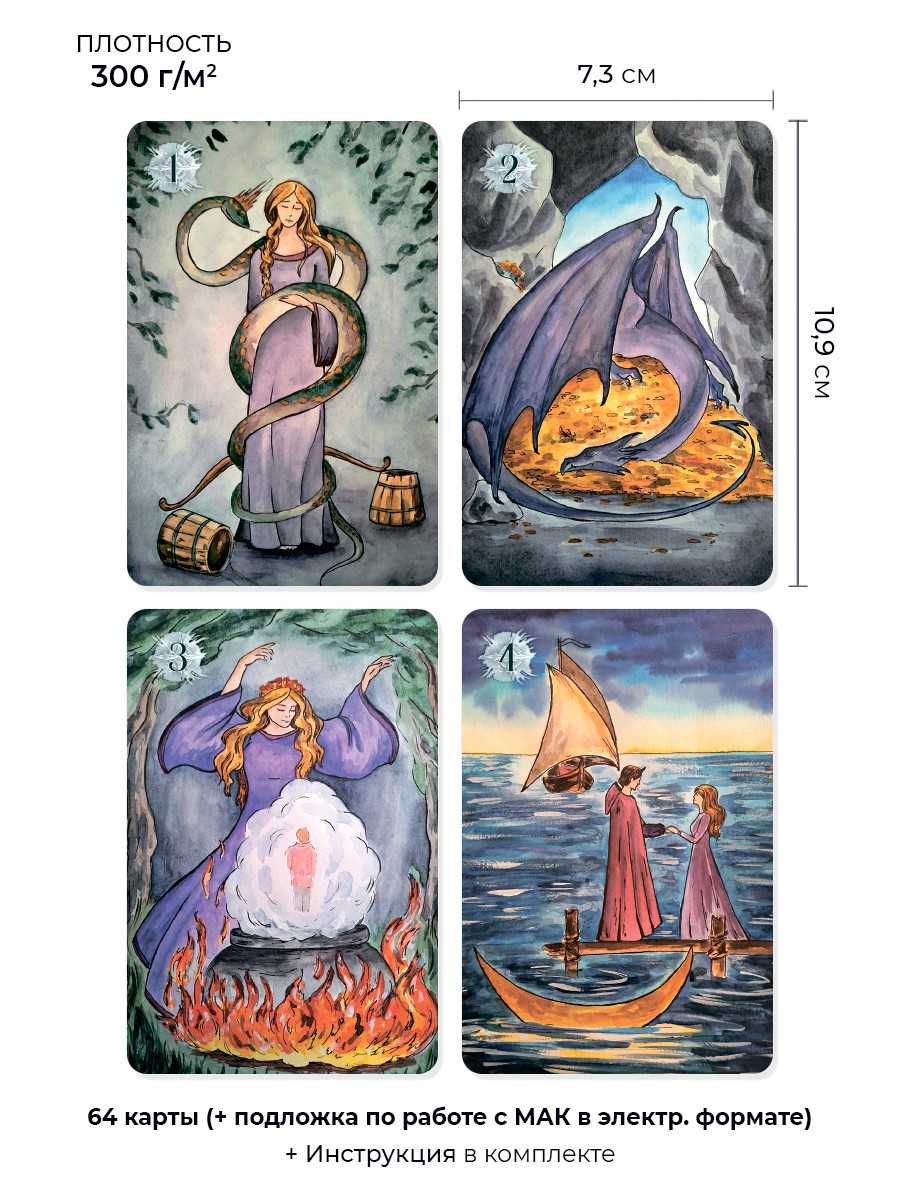
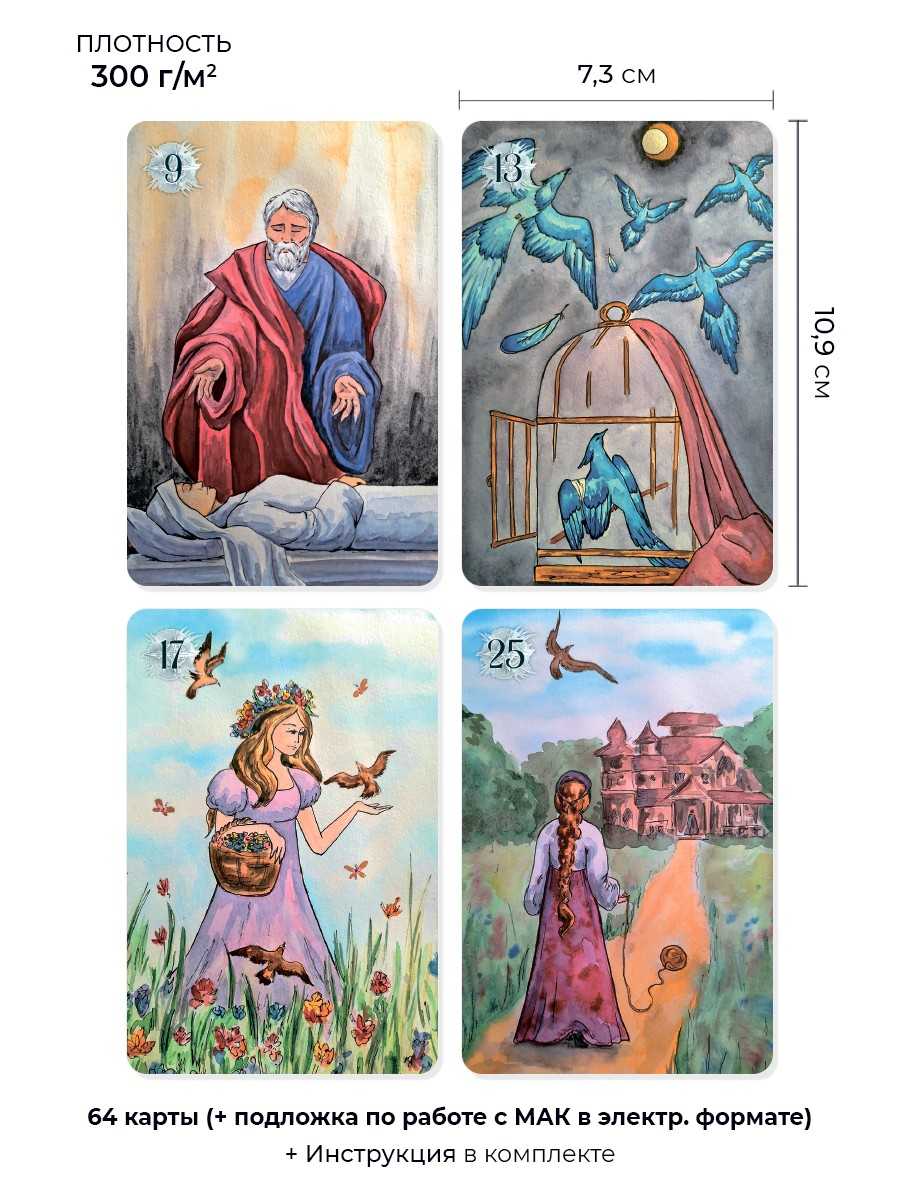
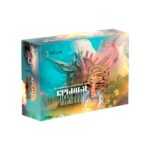
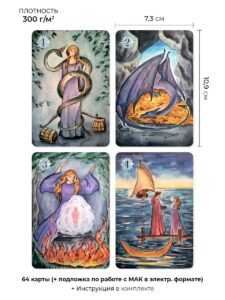
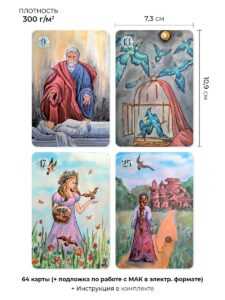
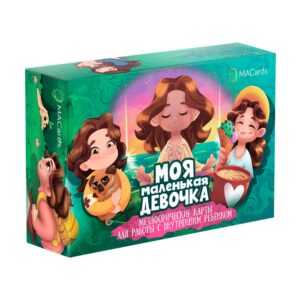
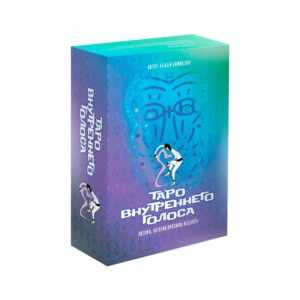
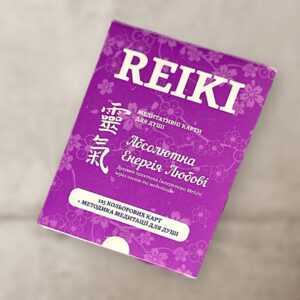
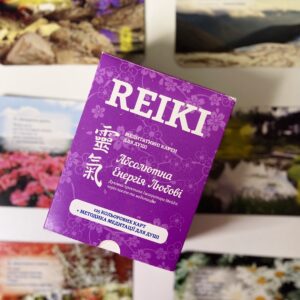


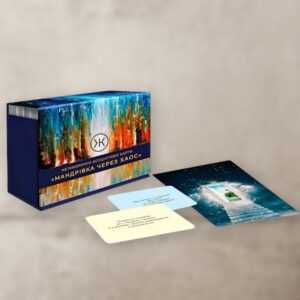
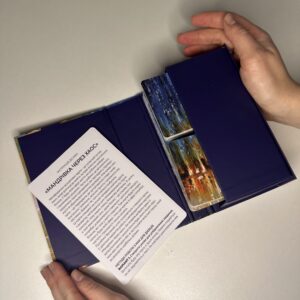

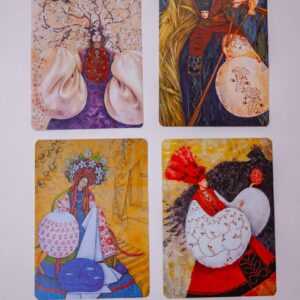

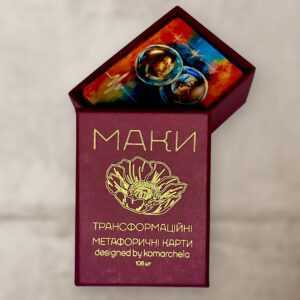
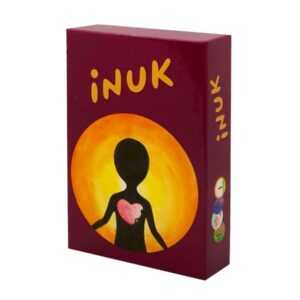
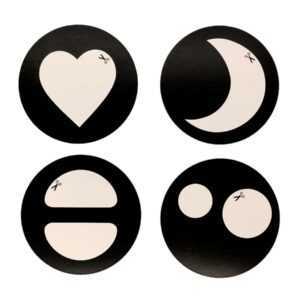

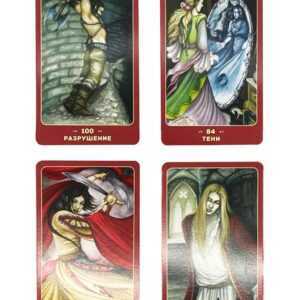
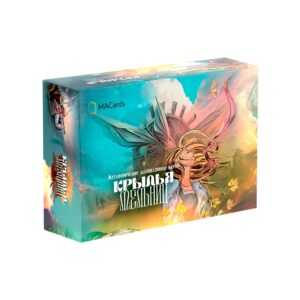
Reviews
Clear filtersThere are no reviews yet.